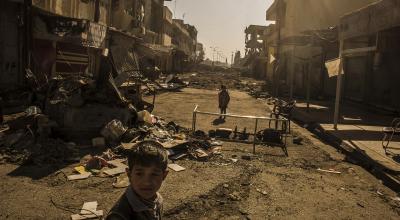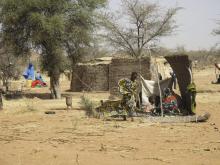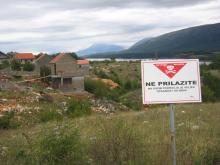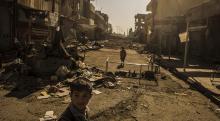Case prepared by Matthew Brown, Clara Burkard, Angèle Jeangeorge and Eva Vaz Nave, LL.M. students at Leiden University under the supervision of Professor Robert Heinsch as well as Sofia Poulopoulou and Christine Tremblay, PhD researchers, Kalshoven-Gieskes Forum, Leiden University; with the contribution of Jemma Arman and Isabelle Gallino, LL.M. students at the Geneva Academy.
A. OFF TARGET:THE CONDUCT OF THE WAR AND CIVILIAN CASUALTIES IN IRAQ
[…]
II. Conduct of the Air War
[...]
Coalition forces took significant steps to protect civilians during the air war, including increased use of precision-guided munitions when attacking targets situated in populated areas and generally careful target selection. The United States and United Kingdom recognized that employment of precision-guided munitions alone was not enough to provide civilians with adequate protection. They employed other methods to help minimize civilian casualties, such as bombing at night when civilians were less likely to be on the streets, using penetrator munitions and delayed fuzes to ensure that most blast and fragmentation damage was kept within the impact area, and using attack angles that took into account the locations of civilian facilities such as schools and hospitals.
But there were still failures in the conduct of the air war that led to the loss of civilian life or to other civilian harm. The most egregious was the flawed targeting of Iraqi leadership. While to a lesser extent than in other recent conflicts, U.S. and U.K. air forces also used some cluster bombs in or near populated areas. Attacks on certain civilian power facilities caused additional civilian suffering, and the legality of attacks on media installations was questionable.
[...]
Collateral Damage Estimates
[...]
U.S. air forces carry out a collateral damage estimate using a computer model designed to determine the weapon, fuze, attack angle, and time of day that will ensure maximum effect on a target with minimum civilian casualties. Defense Secretary Donald Rumsfeld reportedly had to authorize personally all targets that had a collateral damage estimate of more than thirty civilian casualties. Asked how carefully the U.S. Air Force reviewed strikes in Iraq for collateral damage, a senior U.S. Central Command [CENTCOM] official responded, “with excruciating pain.” He told Human Rights Watch,
[T]he primary concern for the conduct of the war was to do it with absolutely minimum civilian casualties. . . . The first concern is having the desired effect on a target. . . . Next is to use the minimum weapon to achieve that effect. In the process, collateral damage may become one of the considerations that would affect what weapon we had to choose. . . . All of the preplanned targets had a CDE [collateral damage estimates] done very early in the process, many months before the war was actually fought. . . . For emerging target strikes, we still do a CDE, but do it very quickly. The computer software was able to rapidly model collateral effects.
Strikes with high collateral damage estimates received extra review. According to another senior CENTCOM official,
CENTCOM came up with a list of twenty-four to twenty-eight high CDE targets that we were concerned about. . . . They had a direct relationship to command and control of Iraqi military forces. These [high CDE targets] were briefed all the way to Bush. He understood the targets, what their use was, and that even under optimum circumstances, there would still be as many as X number of civilian casualties. This was the high CD target list. There were originally over 11,000 aim points when we started the high collateral targeting. Many were thrown out, many were mitigated. We hit twenty of these high collateral damage targets.
[...]
For the most part, the collateral damage assessment process for the air war in Iraq worked well, especially with respect to preplanned targets. Human Rights Watch’s month-long investigation in Iraq found that, in most cases, aerial bombardment resulted in minimal adverse effects to the civilian population.
The major exception was emerging targets, especially leadership targets. A Department of Defense source told Human Rights Watch that CENTCOM did not perform adequate collateral damage estimates for all of the leadership strikes due to perceived time constraints. While the U.S. military hailed the quick turn-around time between the acquisition of intelligence and the air strikes on leadership targets, it appears the haste contributed to excessive civilian casualties because it prevented adequate collateral damage estimates.
[...]
Preplanned Targets
[...] Preplanned targets included leadership, government, security, and military facilities, and certain dual-use infrastructure elements (such as electrical power, media, and telecommunications facilities).
Attacks on these facilities generally did not result in civilian casualties or extensive damage to civilian property for a number of reasons. U.S. strategy avoided power plants, public water facilities, refineries, bridges, and other civilian structures. Most of the facilities that were hit were in areas to which the civilian population did not have access. Thorough collateral damage estimates were done for each of the preplanned targets. Finally, these attacks were carried out exclusively with precision-guided munitions.
[...]
Media Installations
[...] The March 28 attack on the Ministry of Information was carried out with the CBU-107 Passive Attack Weapon, marking its first use in combat.
The CBU-107, nicknamed the “rods from God” by the U.S. military, is a new non-explosive cluster bomb that contains 3,700 inert metal rods designed to destroy “soft” targets, i.e., those without armor. In this case, two CBU-107s were used to remove antennae on the roof of the building without destroying the facility.
[...]Visible observation of the facility confirmed that there was little to no structural damage done by the air strike, though the antennae were destroyed. The church adjacent to and a mosque across the street from the ministry suffered minimal damage, primarily broken windows, in the attack.
Prior to this attack the United States had used a Predator drone armed with a Hellfire missile to destroy a single uplink antenna at this facility. The use of the armed Predator allowed CENTCOM to confirm visually there were no civilians in the area during the attack. The Predator also had a smaller warhead than the majority of bombs dropped during the war, thereby reducing damage to the area and the potential for civilian casualties.
In contrast to the Ministry of Information, the Television Studio and Broadcast Facility and the Abu Ghraib Television Antennae Broadcast Facility were completely destroyed. The former is in a Baghdad business district, while the latter is in an isolated area.
[...]
Civilian Telecommunications Facilities
U.S. attacks largely destroyed the telecommunications infrastructure in Iraq. The main telecommunication gateway switches Sinek and Ma’mun were both destroyed by GBU- 37/B 5,000-pound guided bombs. Their destruction removed all long-distance calling capability from Iraq to the outside world. There were no reported civilian casualties in the attacks on these facilities, probably because of the timing and weapon choice. The attacks all took place at night when the chance of civilians being present was lessened. The bombs used were penetrators, which are designed to bury deep inside a target before exploding, therefore imploding the building and minimizing damage to the surrounding area.
[...]
Cluster Bombs
[...]
The U.S. Air Force reduced the danger to civilians from clusters by modifying its targeting and improving technology. Apparently learning a lesson from previous conflicts, the Air Force dropped fewer cluster bombs in or near populated areas. While Human Rights Watch found extensive use of ground-launched cluster munitions in Iraq’s cities, it found only isolated cases of air-dropped cluster bombs. As a result, the civilian casualties from cluster bomb strikes were relatively limited.
[...]
The Air Force also reduced the threat to civilians from cluster bomb strikes by using improved technology. The guided CBU-103, which is more accurate due to the WCMD, represented about 68 percent of the total number of reported cluster bombs used by the United States. Other cluster bombs with guidance systems included the CBU-105 and any JSOWs and TLAMs that carried submunitions. Such weapons choice is a dramatic improvement over that in the 1991 Gulf War and Yugoslavia, as well as Afghanistan, where the CBU-103 was introduced. In the latter conflict, use of older, unguided CBU-87s contributed to dozens of civilian deaths because they strayed from their targets and landed on nearby villages.
[...]
III. Conduct of Ground War
Coalition Conduct in the Ground War
Ground-Launched Cluster Munitions
[...]
New Technology
Both the United States and United Kingdom deployed new types of cluster munitions in Iraq that are designed to reduce the dud rate. The U.S. Air Force dropped the CBU-105 Sensor Fuzed Weapon for the first time in combat. This weapon, eighty-eight of which were used, employs the Wind Corrected Munitions Dispenser. It contains ten BLU-108 submunitions, each of which releases four skeet warheads, the size of hockey pucks, with infrared sensors. To reduce the dud rate, the submunitions have self-destruct mechanisms. Human Rights Watch visited one site outside of al-Hilla where the United States had dropped CBU-105s on an isolated field of artillery. No unexploded skeets were visible although some could have been hidden in the tall grass. The CBU-105 Sensor Fuzed Weapon is a potentially significant development that attempts to address key humanitarian problems associated with cluster weapons: accuracy of both the munition and submunition and dud rates. Further investigation should be done to calculate its dud rate in actual combat operations and determine if it meets its design standards in practice. […]
In a U.K. combat first, British forces used the L20A1, an artillery shell with M85 submunitions similar to U.S. DPICMs but with self-destruct mechanisms. The submunition has a dud rate of 2 percent, according to the British Ministry of Defense. If that rate occurs in actual combat, it would be an improvement over the U.S. model, which has a reported 14 percent dud rate. [...] Ironically the promise of a lower dud rate may have made the British less careful about where they used the L20A1. “There was less of a reluctance to use them because of the increased reliability,” Colonel Baldwin said. Efforts to reduce the dud rate of cluster munitions should be commended; however, the rates must be made significantly lower and cluster munitions must be kept out of populated areas if humanitarian harm is to be minimized.
[...]
B. COALITION TARGETING PROCEDURES
[...]
[W]e have an unprecedented capability now with technology to achieve precision in our targeting. We have the ability to hit, in most cases, exactly what we try to hit, and scale the munitions appropriately to the task. We also believe that that capability comes with it a responsibility. Because we can be more discriminating in the use of force, it gives us a responsibility to be more discriminating.
[...]
Now, clearly, as I have mentioned, the technology has given us a great capability and a great responsibility, but has not made us perfect. And we're not anywhere near that, and we don’t expect to be near that. We are going to have collateral damage occur. We have seen it already. There will be unintended casualties. And that will happen when technological systems malfunction, weapons break.
It's going to happen when human beings make mistakes, simple human error. And that will happen in every war and on a daily basis. And it will also happen in the fog of war when the weapons may perform exactly as we desire, and human beings may be operating, making rational decisions, but the information that they have is confused because the battlefield is almost by definition that way.
And so the fog of war also produces instances where we strike targets with all the right intentions and with all the right precisions, but with an outcome that we did not seek.
[...]
Now, our targeting process starts at the beginning of any military operation, either at the beginning of the campaign or in a much shorter -- as any commander prepares for an engagement, what he does is he determines those targets or those effects he must create on the battlefield to achieve his military objectives. [...]
But that's only really the first part of the targeting process, because once that list is produced, the target list, it then goes through what we call a vetting process, and that vetting process goes through a number of members of the staff and it's a series of decisions. For example, we'll go through legal review, public affairs review, intelligence review, and then we'll look for things like is this really the target we think it is, is it really where we thought it was, is it really necessary, is it legal -- a number of issues.
And each one is judged on the bullets that you see above. For example, is the target likely to result in non-combatant casualties? Is it like to result in damage to structures nearby, or affect protected sites? Is it a dual-use target? Will the effect of creating the military effect we want actually have a negative effect on the populace?
[...]
In this conflict, we've already had significant cases where the Iraqi regime has positioned military equipment right in the vicinity of historic sites. Just this week, in the Grand Mosque in An-Najaf, we took fire from inside the mosque. We took direct fire from inside the mosque. We did not return fire. We did not engage the mosque at all because of its status, although legally, under the law of war, as soon as a facility like that is used, it loses that protective status, we understand that the unintended consequences of returning fire in a case like that just doesn't measure up either in values or military necessity, and so we did not. In fact, the soldiers of the 101st Air Assault Division made a very specific decision not to do that.
In all of the processes we talk about here, we are aided by a number of things, from computer programs that allow us to model and simulate what our munitions will do; a very detailed process of review, starting with the initial targeteers and review to the highest levels; the high collateral damage targets are reviewed high up the chain of command and decisions made on a constant basis; and then a review of the battle damage assessment of each target to minimize those times we have to go back and re-strike a target if, in fact, it did not achieve the desired effect.
[...]
Discussion
I. Classification of the Situation and Applicable Law
2. Is the United Kingdom bound to apply Additional Protocol I, notwithstanding that the United States is not a party to that treaty, and Iraq was not a party in 2003? To what extent are the rules on the conduct of hostilities in international armed conflicts customary? (
CIHL rules 1-24).
II. Conduct of Hostilities and Technological Improvements
3. What are the criteria to be assessed by a military commander in deciding whether to launch an attack? (
P I, Arts. 48,
51,
52,
57).
4. What standard of knowledge is required of a military commander to decide whether to launch an attack? Is the “fog of war” (Document B) a relevant consideration?
5. How can computer modelling facilitate the assessment of distinction, proportionality and precautions?
6. What kinds of modifications in weapons are being developed to reduce the risk of civilian casualties? (Document A) What was the unexpected consequence of improved cluster munition weaponry employed in the ground offence?
7. (Document B) General McChrystal states that enhanced technological capability increases “the responsibility to be more discriminating”. If a State has access to more sophisticated weaponry, capable of greater discrimination, is that State obliged to use it? Is it unlawful to employ “outdated” weaponry? Could the development of new technologies create new obligations under IHL? (
P I, Art. 57)
III. Elements Contributing to Respect for IHL
8. What do you think might lead a State to desist from attacking a historic site in circumstances where live fire is being issued from that building? What do you think might be the "unintended consequences" of returning fire (Document B)?
9. Is it realistic to expect all attacks to go through such detailed planning and review processes as described in the documents?
10. In Document A, the choice of weapons is seen as “a dramatic improvement over that in the 1991 Gulf War and Yugoslavia, as well as Afghanistan”. Why is a “lessons learned from previous conflicts” exercise important? Is it prescribed by IHL?
11. Document B is the transcript of a briefing for the foreign press. In your opinion, why is information regarding the conduct of hostilities publicised in such a way?
12. May the fact that States were fighting in Iraq in a coalition have influenced their respect for IHL?





